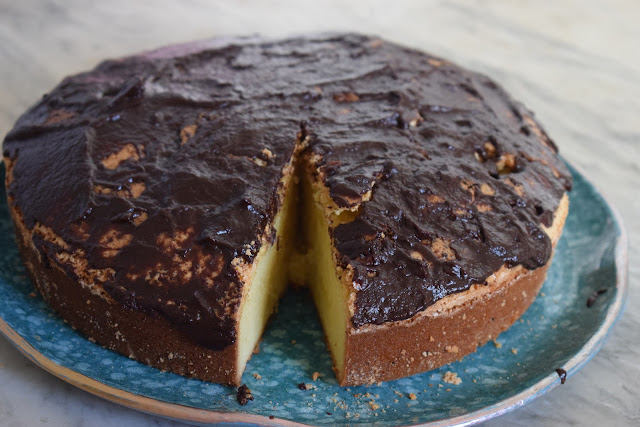Egypt's best kept secret for sponge cake

Ah ha! I bet you all thought I'd never write again, or that I had run out of recipes. Well, perhaps more likely the latter. But the truth is life has been in the way for the past two years (almost exactly to the day). Added to that is the fact that I really wasn't inspired by many of the recipes in my collection. I went to Egypt a few times in between, and found a few things....but nothing felt worthy enough to share with you.
That being said, today is day ? (I've lost count) of our lockdown in France and worldwide. And I'm sure many of you are killing time by sharpening your culinary skills, so why not make cake? As Marie Antoinette famously said: "let them eat cake".
And so we shall.
*Just a warning, the recipe for this cake is for an army, so might be good to cut it in half if you're worried about finishing it.
THE LEGACY OF SAMIRA
Now sponge cake does not exactly convey images of the sun-drenched country of pyramids as the warm breeze of the nile blows the desert sands around. This recipe is actually a well-known one in our family made famous by my maternal grandmother Samira, or Tante Ri-Ri as she was affectionately called.
None of us in our generation ever met her, but her legacy lives on as one of the best cooks, bakers and illustrators (she used to illustrate children's books) and photographer (she and her husband apparently dabbled in this).
My two maternal first cousins are the ones who brought this cake to my attention. And after a video baking show-and-tell that spanned three countries, I now have THE recipe! Thankfully my aunt was on the other line guiding the prepartion of the cake. The ingredients are simple. My grandmother used to add cinnamon for flavour, or you can add lemon peel/juice or whatever you want. I opted for a chocolate topping; a favourite recipe from my paternal aunt.
ON THE HOT TRAIL OF SPONGE CAKE
But sponge cake? Again, how is it a family recipe in Egypt? Let's look at the origins of sponge cake.
I'll be the first to admit, it's not Egyptian or Middle Eastern in its character, I mean there's no butter..and just about everything has some butter base in the desserts.
According to Bakerpedia, a site that has all kinds of rare facts on baked goods, sponge cake was born during the Renaissance age in Italy. Italian cooks baked these sponge 'biscuits' which spread across the territory (Italy wasn't yet united) and then through England and France.
It was only in 1615 when the recipe itself was recorded by the English poet and author Gervase Markham. Up until this point however, the cake really looked more like a cookie: thin and crispy.
During the mid-18th century was when the idea of beating the eggs became part of the process and that in turn created a spongy batter. When baked, the airy batter turns into a raised cake without any other ingredients. And hello, sponge cake as we know it happened.
SPONGE CAKE IN EGYPT
Fast forward to our friends the English colonialists as of 1882, and the growing Italian community that followed from that time up until the end of the Second World War, and we have two communities from where the sponge cake likely originated.
Many Egyptian families have these European recipes lurking in their repertoire: sponge cake, petit four (shortbread cookies), or bâton salé (breadsticks) to name a few. But over time, they have become egyptianised and passed down generation generation. And so this is ours.
__________________________________
Total preparation time: 20 minutes
Total baking time: 30 - 50 minutes (depends on your oven)
Yield: 10
INGREDIENTS:
9 eggs
2 cups of sugar
2 cups of flour
CHOCOLATE SAUCE (optional)
1/2 cup sweetened baking chocolate
1 tablespoon milk
2 teaspoons of rum (or liquor of your choice)
___________________________________
DIRECTIONS:
1. Heat oven to 350F/175C
2. Crack all the eggs into a large bowl
3. Whip until colour turns light

4. Add sugar
5. Mix some more until batter is fluffy looking and airy

6. Fold in flour slowly into batter, taking care to keep the foaminess of the batter
7. Add batter into a non-stick pan or lightly grease pan with butter




This blog is amazing! I came for the karkade post but I absolutely love the other recipes you've posted. Thank you! Keep it up!
ReplyDeleteThank you so much!!! I'm glad you found the
Deleteother recipes.
This comment has been removed by a blog administrator.
ReplyDelete